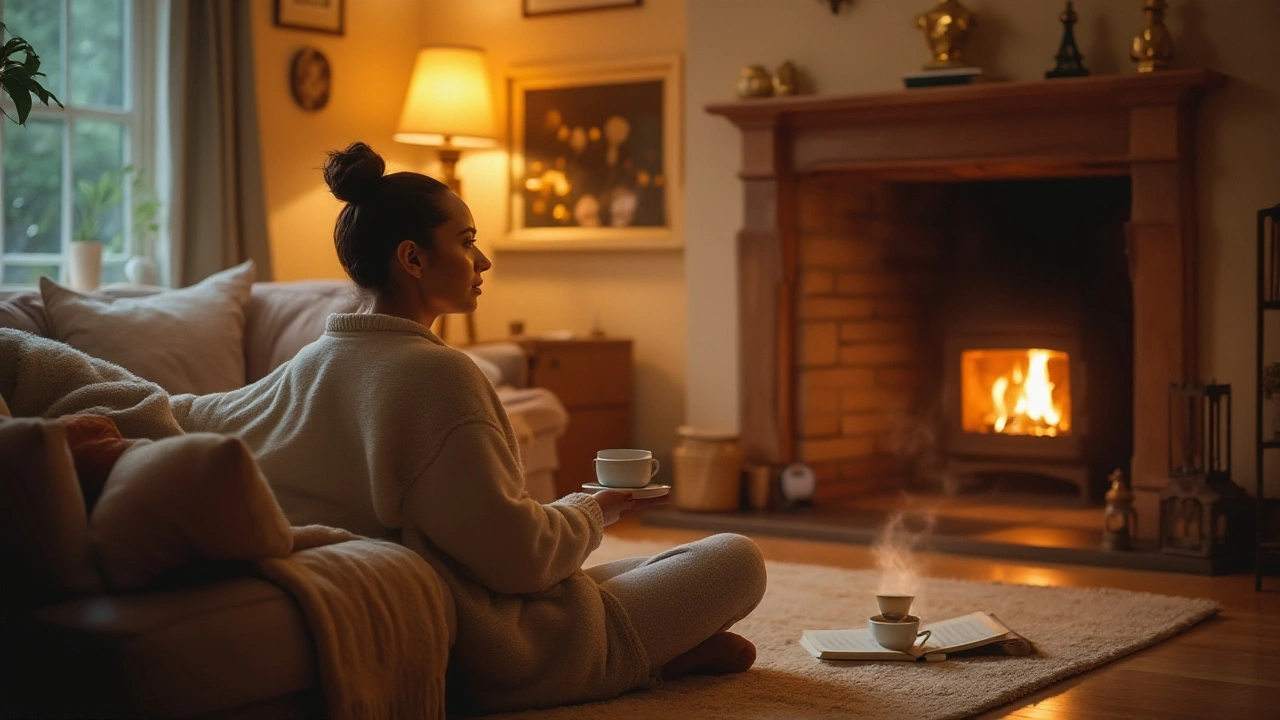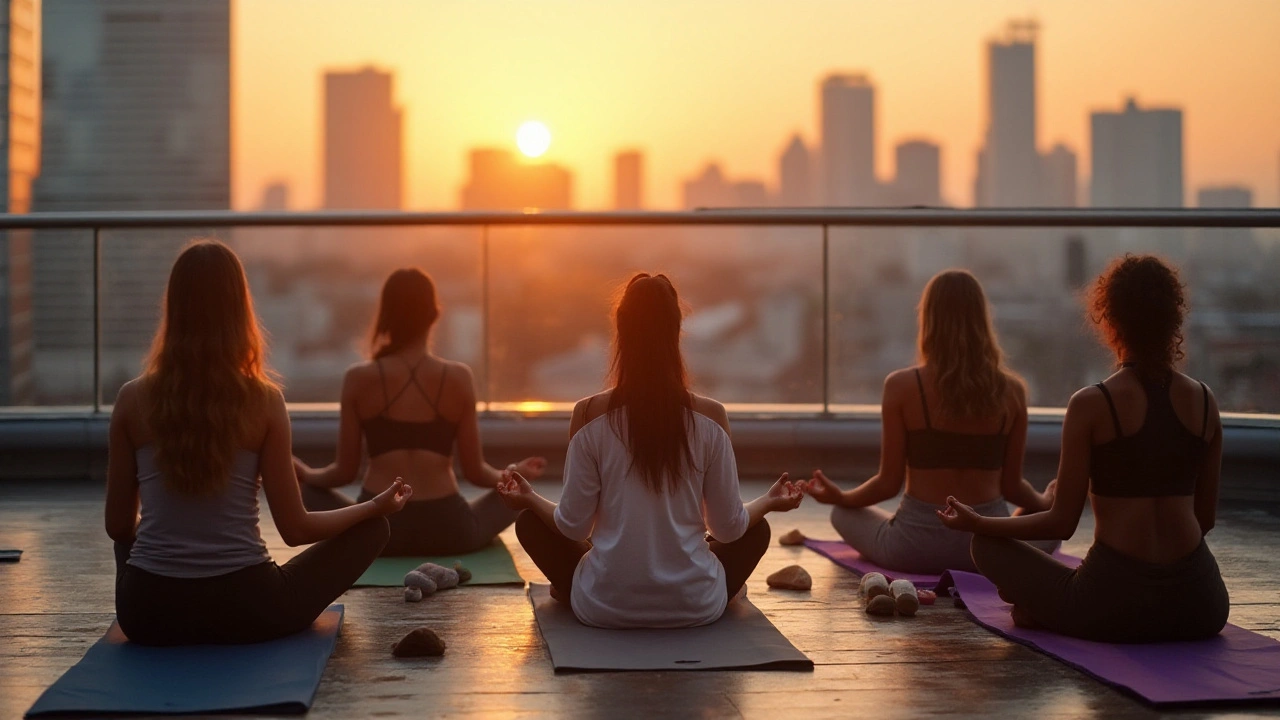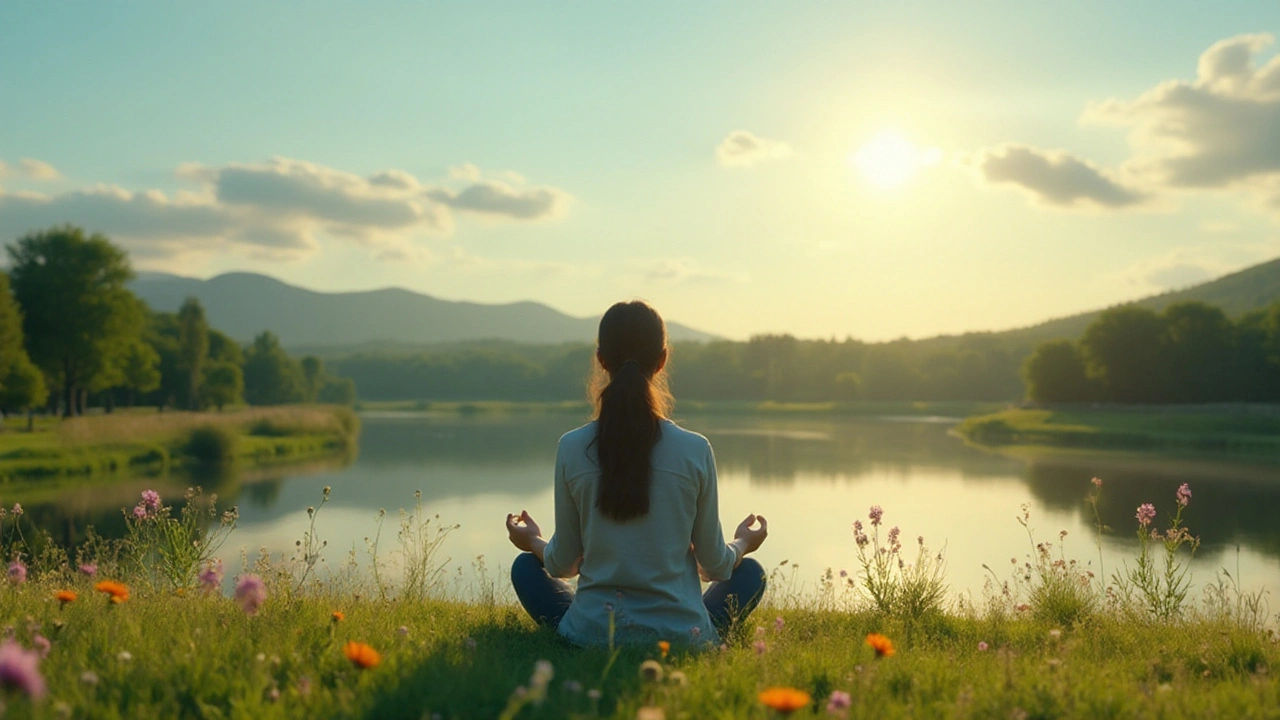In today's hectic world, finding moments of peace and calm can seem like chasing an elusive dream. Yet, integrating relaxation techniques into your daily routine could be the missing puzzle piece in achieving a well-rounded wellness strategy.
Relaxation goes beyond mere comfort; it's a vital tool for maintaining mental and physical health. By intentionally setting aside time to unwind, you can alleviate stress, reduce symptoms of anxiety, and improve overall quality of life.
Whether you're drawn to deep breathing exercises, progressive muscle relaxation, or the tranquility of meditation, these practices offer a lifeline to those seeking balance in their lives. Our exploration into the world of relaxation techniques reveals not just how these methods work, but why they're quickly becoming a staple in personal wellness regimens around the globe.
- Understanding Relaxation and Its Importance
- Popular Relaxation Techniques
- Incorporating Relaxation into Daily Life
- The Science Behind Relaxation
- Tips for Choosing the Right Technique
Understanding Relaxation and Its Importance
In our ever-buzzing existence, marked by demanding schedules and constant connectivity, the concept of relaxation often takes a back seat. But it’s important to explore what relaxation truly means and why it's crucial for our well-being. At its core, relaxation is the state of being free from tension and anxiety. Beyond merely feeling good, relaxation plays a crucial role in reducing stress levels and its associated health risks. Chronic stress is a known contributor to a range of health issues, including heart disease, diabetes, depression, and anxiety disorders. Incorporating intentional relaxation techniques into one's routine isn't merely an indulgence—it's a necessity. The ability to disconnect from stress-inducing stimuli gives us the opportunity to recharge both mentally and physically, thus improving our overall health.
The science behind relaxation techniques was largely unexplored until Dr. Herbert Benson popularized the term 'relaxation response' in the 1970s. He described it as a physical state of deep rest that changes the physical and emotional responses to stress. According to Benson, “The relaxation response is a physical state of deep rest that changes the physical and emotional responses to stress…and the opposite of the fight or flight response.” When practiced consistently, various relaxation techniques can trigger this response, reducing anxiety, lowering blood pressure, and decreasing muscle tension. From meditation and yoga to visualization and biofeedback, these methods not only help in counteracting stress but also promote a heightened sense of peace and wellness.
Relief techniques are essential for achieving a balanced lifestyle. When we prioritize regular relaxation, we also enhance our ability to manage everyday pressures effectively. It's important to remember that relaxation doesn't just mean being lazy or complacent. Instead, it’s a deliberate act of slowing down for self-care. This approach not only aids in striking a balance between work and personal life but significantly enhances mood, productivity, and alertness. Incorporating relaxation into daily life can adopt many forms, such as dedicating time for hobbies, engaging in mindful meditation, or taking a stroll in nature. The key lies in finding what works best for you and making it a regular part of your routine.
“Without the restful state brought by relaxation, we are stuck in a cycle of mounting stress,” says Dr. Elizabeth Scott, a wellness expert. “Taking time to relax is an investment in your well-being.”
The importance of relaxation is also supported by data showing positive health impacts. For instance, a study published in the journal Health Psychology found that participants who practiced relaxation strategies over a three-month period reported significant reductions in stress and increases in overall life satisfaction. This underscores the notion that beyond merely making us feel better momentarily, consistent relaxation practices bring long-term benefits for mind and body. Consequently, understanding relaxation techniques may be the first step toward unlocking improved quality of life.
Popular Relaxation Techniques
Amidst the whirlwind of daily life, finding reliable methods to unwind and regain a sense of peace is invaluable. Relaxation techniques have been honed over centuries, offering a timeless solution to stress that is remarkably simple to incorporate yet profoundly effective. Among the most widespread methods is mindful meditation, a practice rooted in the Buddhist tradition that has gained massive popularity worldwide. By focusing intently on the present moment and observing thoughts without judgment, individuals often find a surprising sense of tranquility. This method not only alleviates stress but also improves concentration and emotional resilience.
Another increasingly popular choice is deep breathing exercises, which can easily be synchronized with daily activities. This technique involves inhaling deeply through the nose, holding the breath for a moment, and exhaling slowly through the mouth. Known to lower heart rate and blood pressure, it provides almost instantaneous relief from tension. Experts from the Mayo Clinic note, "Deep breathing directs your focus on the act of breathing, which leads to mindful relaxation—a technique proven to reduce stress relief and anxiety." Beyond these, techniques like progressive muscle relaxation, where each muscle group is tensed then relaxed, help create a profound state of physical calm and mental clarity.
For those who enjoy movement, yoga offers a dual benefit of physical fitness and mental wellness. Combining postures with breathing techniques, yoga promotes flexibility and strength while simultaneously bringing a gentle, meditative calm to the mind. This approach is backed by scientific research, which reveals that yoga reduces levels of the stress hormone cortisol, fostering an enduring sense of mental health stability. Additionally, the rhythm and focus involved in activities like tai chi provide a gentle yet effective way to relieve stress while improving balance and coordination. These practices demonstrate that relaxation is not a one-size-fits-all solution; it can be as dynamic and varied as our individual lifestyles and preferences.
Finally, perhaps the simplest, yet often underappreciated technique is journaling. By writing down thoughts and feelings, one can process emotions more effectively, leading to enhanced clarity and peace of mind. Research from Psychotherapy Research confirms that expressive writing can lower stress and boost overall mental health. These techniques illustrate that relaxation can be seamlessly woven into the fabric of our daily routines, waiting patiently to transform our experiences from within.

Incorporating Relaxation into Daily Life
Incorporating relaxation techniques into everyday life isn't as daunting as it might initially sound. The key lies in starting small and being consistent. Many people find that dedicating as little as five to ten minutes a day to a relaxation practice can significantly improve their overall well-being. Consider your preferred time of day; some might enjoy unwinding through evening meditation, while others may start their day with a brief session of mindful deep breathing. These moments can offer a powerful reset to tackle the rest of the day's demands with a clearer mind.
A popular method is finding a quiet spot free from distractions. This space doesn't need to be elaborate—it could be a simple corner in your living room or a seat by the window. Once settled, allow yourself to focus on your breath, the rhythm bringing you in tune with the moment, calming nerves and centering thoughts. Scientific studies show that consistent practice of even simple techniques like these can help reduce cortisol levels, a key hormone involved in the body’s stress response. And it's not just anecdotal; renowned health institutions recognize the benefits. According to the Mayo Clinic, "regular practice of relaxation techniques can improve how your body responds to stress."
Including family members in relaxation routines can be another meaningful way to weave these practices into daily life. Parents can teach kids relaxation techniques through fun activities, turning it into a bonding experience. A family yoga session or a guided imagery exercise at the end of the day can help both adults and children manage stress better.
"These practices not only foster self-regulation but also cultivate a deeper family connection," notes a family psychologist in Health Magazine.Building these habits can foster a lasting culture of wellness that benefits everyone. Consider setting a regular 'unplugging' time, where the whole family puts aside electronic devices, perhaps replacing that screen time with a ten-minute guided body scan or gentle stretching exercises. Over time, these small daily habits create a ripple effect of tranquility and healthfulness that carries through more challenging times.
Embrace the trial and error process. Not every approach works for everybody, but experimenting with different practices—from progressive muscle relaxation to guided imagery—can help identify what suits your lifestyle best. After a few weeks, jot down how you feel physically and mentally, comparing those notes to when you started. Get creative; perhaps keep a relaxation jar filled with activities written on slips of paper to draw from when you need inspiration. The key is to nurture a routine that suits your unique life rhythm and responds to your personal stressors. Ultimately, making room for relaxation techniques in everyday life is about finding balance and joy in the mundane, learning to slow down amidst the hustle and bustle, and letting go of what no longer serves you.
The Science Behind Relaxation
Understanding the science behind relaxation is like discovering the blueprint to serenity—a physical and mental recipe that anyone can follow. At its core, relaxation is about triggering the body's parasympathetic nervous system, often referred to as the 'rest and digest' system. This system acts as a counterbalance to the 'fight or flight' instincts of the sympathetic nervous system. By promoting a state of calm, the body can repair itself, improve digestion, and conserve energy.
Research shows that relaxation techniques significantly lower cortisol levels, the hormone responsible for stress. Chronic stress can lead to a multitude of health problems, including but not limited to hypertension, impaired cognitive function, and weakened immune response. By practicing relaxation methods, you give your body the chance to lower these cortisol levels, allowing for better overall well-being. It's interesting to note that the regular practice of relaxation can promote neuroplasticity, which is the brain's ability to reorganize itself by forming new neural connections throughout life. This means your brain becomes more adept at handling stress.
Several studies have confirmed the effectiveness of techniques such as mindfulness meditation and progressive muscle relaxation. For example, a notable study published in the journal of Health Psychology found that participants engaging in regular mindfulness practices experienced a notable decrease in stress-related symptoms and an increase in the sense of overall happiness. This is because relaxation techniques help activate the frontal cortex regions of the brain associated with feelings of happiness and calm.
"The science of relaxation isn't just about feeling good—it's about crafting a resilient mind," said John Hopkins, a notable researcher in the field of psychology. "With every deep breath, with each moment of mindfulness, you're building a healthier tomorrow."
The biochemical reactions that occur during relaxation are fascinating. When you engage in activities like deep breathing or guided imagery, the pituitary gland releases endorphins. These are natural painkillers that not only improve mood but also enhance an overall sense of contentment and peace. Techniques such as Yoga Nidra, a form of guided sleep meditation, have been scientifically documented to increase dopamine production. Dopamine is a neurotransmitter that's critical for mood regulation, thus explaining why individuals often feel uplifted after a session.
A fascinating point to note is how relaxation techniques affect heart rate variability (HRV), which is a measure of the variation between heartbeats. A higher HRV indicates a relaxed state and greater resilience to stress, which is essential for cardiovascular health. Studies have shown that individuals practicing regular relaxation exercises have a significantly higher HRV, suggesting a stronger and more resilient cardiac function.
So, when you integrate relaxation techniques into your wellness routine, you're not simply taking time out to chill—you're engaging in a scientifically-backed practice that supports a healthier, happier lifestyle. As researchers continue to uncover more about how and why these practices work, it's clear that the benefits extend far beyond the immediate sense of calm. With the wealth of knowledge available, now is the perfect time to embrace these powerful methods, enhancing your mental health and overall quality of life.

Tips for Choosing the Right Technique
Selecting the perfect relaxation technique is akin to finding a pair of shoes that fit just right: it's all about comfort and personal preference. One might assume that all relaxation methods are created equal, but various techniques cater to different needs and lifestyles. When selecting a suitable method, consider your personal stressors and what brings you peace. For instance, if you're often overwhelmed by noise, a silent meditation practice might be ideal. And if you have physical tension, perhaps yoga's gentle stretches will offer relief.
Start by reflecting on what you want to achieve. If reducing stress from a hectic work schedule is your primary goal, try activities like guided imagery, where you focus on visualizing peaceful scenarios. Harvard Medical School suggests that imagery can sometimes achieve results similar to actual physical rest. On the other hand, if you struggle with anxiety, you might benefit from the structured nature of techniques like progressive muscle relaxation, which involves tensing and then releasing different muscle groups.
It's beneficial to experiment with a few different techniques to see what resonates most. Set aside a week to practice a different method every couple of days; track how these techniques impact your mood and stress levels. Many have found that combining techniques, such as pairing a short meditation with a yoga routine, can offer compounded benefits. According to a study by Johns Hopkins University, a meditative practice as brief as 5-10 minutes has tangible psychological benefits, which may advocate for your perfect relaxation cocktail.
Access to resources is another significant factor. While local classes and workshops can offer hands-on guidance, online videos and apps have made it incredibly easy to explore new practices from home. Look into popular apps like Calm or Headspace, which provide a range of options catering to different needs—from exercise-specific relaxations to short, mindful practices for on-the-go tranquility. Nowadays, the digital world offers a plethora of free and paid content, bridging geographical and financial gaps in wellness exploration.
As you delve deeper into wellness routines, it's worth noting how socioeconomic factors can impact accessibility to certain techniques.
The American Psychological Association highlights, "well-being is not only a personal pursuit but can be significantly influenced by one's environment and resources." Choose practices that align with your lifestyle, allowing for practicality and consistency, as regular practice is key to experiencing the benefits.
Ultimately, the most effective relaxation technique is one that you enjoy and can maintain regularly. Whether it's finding joy in a morning yoga session or winding down with evening meditation, the practice you look forward to is most likely to become a habit. As you explore these approaches, remember that the journey to relaxation is personal and unique. Patience and persistence in this process can pave the way to a more balanced and calmer life.
